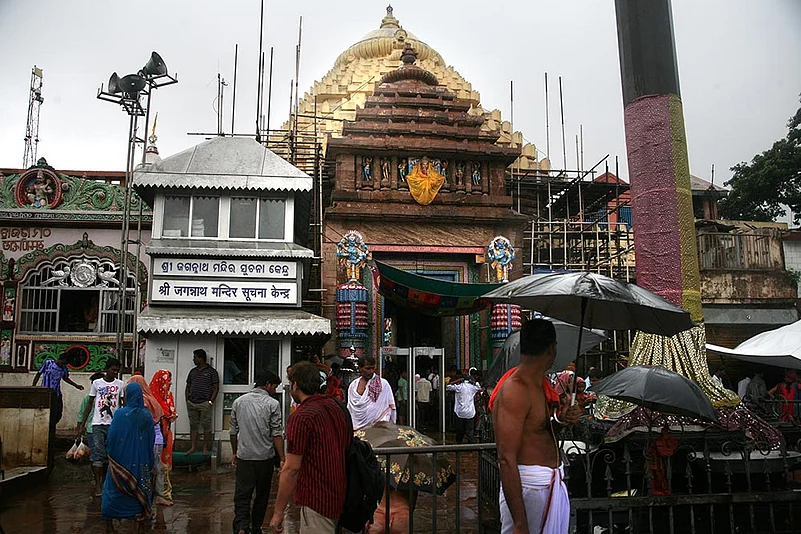A lost key has much of Odisha up in arms. There has been no let-up in demonstrations, protests and collective breast-beating since the media broke the news that the key to the inner chamber of the Ratna Bhandar, the storehouse of the incredible wealth of the Shree Jagannath Temple in Puri, had been lost. Curiously, the temple administration knew about the missing key in early April when preparations were being made to enter the Ratna Bhandar to assess the safety of the structure as per the orders of the Orissa High Court, but no FIR was filed nor an administrative inquiry ordered. All that was done was to try preventing the news from making it to the media. Only when it became public knowledge in the beginning of June that the government ordered a judicial inquiry by a retired high court judge—perhaps the first time a Commission of Inquiry was set up to probe a lost key in this country.
The government’s less-than-transparent move has predictably raised suspicions in the minds of crores of Jagannath devotees that some of the immense stock of gold and diamond ornaments in the Ratna Bhandar may have been pilfered. In fact, there has been no stock-taking of the wealth inside since an inventory was made way back in 1978 even though the Shree Jagannath Temple Act, 1960, under which the state government took over the management of the temple, stipulates that the Ratna Bhandar must be opened every six months and a fresh inventory made every three years when a new temple management committee takes charge.
With no assessment since 1978, it is hard to put an exact figure to the temple wealth, but the jewellery would be worth several crores of rupees even by the most conservative estimate. “Top jewellers from Mumbai and Gujarat had been invited to assess the value of the ornaments during the reign of the Gajapati king, but they failed to put a figure to it as they had never before seen some of the rare diamonds they found inside. You can guess the size of the wealth then,” says Surendra Mishra, an expert on the Jagannath cult who feels only a CBI inquiry would bring out the truth.
The uproar over the lost key has already claimed its first victim, though. Senior IAS officer Pradeep Jena was replaced as chief administrator of the Shree Jagannath Temple Administration (SJTA) by Pradipta Mohapatra late on the evening of June 11. Jena had on April 4—after an inspection by a 17-member team of officials of the SJTA, the state government and the Archaeological Survey if India (ASI)—told journalists waiting outside that the team took stock of the inside of the structure with the help of searchlights and hence “there was no need” to enter the Ratna Bhandar. But it convinced nobody.
“Why did the team go inside in the first place if they did not have the key?” asks Rajat Pratihari, general secretary of the Garabadu Nijog, one of the 36 ‘nijogs’ (groups of servitors) of the Jagannath Temple. “They should have been upfront about the lost key, lodged an FIR and informed the high court.”
The refusal of the state government to order stock-taking of the ornaments stored in Ratna Bhandar even at this late stage has only helped deepen apprehensions about the theft of jewellery. Among the handful of people who believe the government’s claim that all the ornaments are intact is Ramakrushna Dasmohapatra, president of the powerful Daitapati Nijog that plays a key role during the annual Rath Yatra. But even he favours a fresh stock-taking to put the apprehensions of the people at rest.
“Ratna Bhandar must be opened under the supervision of a high-level committee and the available jewellery tallied with the inventory made in 1978 to check if everything is intact,” says Dasmohapatra.
By Sandeep Sahu in Puri


























